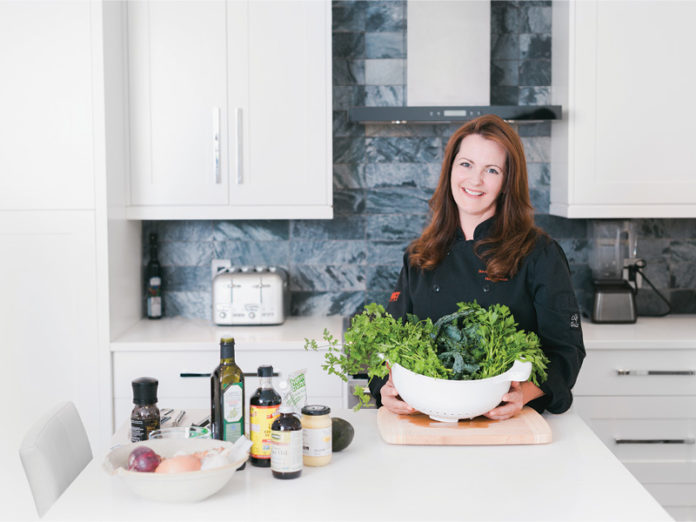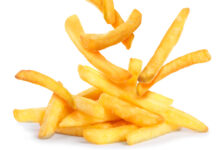
It’s no secret that a diet filled with nutrient-dense, whole foods — one that contains less inflammatory, packaged and processed food — will benefit our health immensely.
But in this crazy-busy life, filled with careers, children, training schedules and commitments, is it realistic to think that we can reduce our reliance on easy-to-prepare convenience food and shift towards preparing food at home? If cooking our own food from scratch is the answer to more nutrients, more energy and better immunity, can we make room for it in our lives?
The short answer is absolutely. Our health, performance and longevity are definitely connected to how we fuel our body, so cooking at home needs to be a priority, regardless of your food philosophy. Even those who have barely stepped foot in a kitchen can make better food happen with a few fundamental skills and a bit of organization.
Over the next several issues, IMPACT’s Kitchen Skills series will focus on setting you up for success. This issue, we start with the basics — getting your kitchen ready to be a place where nutritious, delicious food can actually be created.

Build the Perfect Pantry
Basic whole foods ingredients
Your pantry and refrigerator should contain the things that you will use and will contribute to health. In other words, real food. Read your labels and learn to recognize ingredients that your body may not respond well to. Check out Michael Pollan’s book Food Rules for simple whole food tips such as, “Don’t eat anything your grandmother wouldn’t recognize as food.”
Your refrigerator should be relatively empty by the end of the week. Take a few hours once a week to chop some veggies, create a dip, make a soup or stew and possibly a protein that you can grab when on the go. Keep your fridge stocked with only the fresh ingredients you will need to make a week’s worth of meals and a few essential condiments such as Dijon mustard, hot sauce, tamari, flax, fresh nuts and seeds.
In my kitchen, I keep only what I need in my pantry. Having a few high quality ingredients at the ready helps my family create things such as salad dressings and dips that we would otherwise have to buy. Processed versions of these products often contain congesting, inflammatory ingredients such as high-fructose corn syrup and hydrogenated, rancid oils. But making dips and dressings from scratch in just a few minutes keeps the nasty ingredients out of our diet, while boosting nutrient density and health!
Barb’s Pantry Must-Haves
- Organic Virgin Coconut Oil for higher heat cooking and baking. It’s anti-microbial and high in nutrients.
- Organic Extra Virgin Olive Oil for low heat cooking, salad dressings and finishing sauces. It’s high in skin nourishing, anti-inflammatory omega 9 fatty acids.
- A few BPA-free cans of organic beans such as chickpeas or black beans for a quick weeknight dinner over salad or turned into a dip.
- Apple cider vinegar and balsamic vinegar.
- High quality, organic glass jars of tomatoes and tomato sauce.
- A sweetener such as honey, stevia or maple syrup.
- Small, sealed batches of spices such as turmeric, cayenne, true cinnamon, sea salt, peppercorns, and cumin. These are anti-inflammatory and very nutrient-dense.
- Bouillon cubes or stock free of monosodium glutamate (MSG).
- A couple shapes of whole grain or grain-free, gluten-free pasta.
- Root vegetables.
- Jars of whole grains such as quinoa, brown rice and oats if you are a grain eater.
- Superfoods such as spirulina, maca, cacao and chia that can easily be thrown in a smoothie or on a bowl of breakfast oats.
Nice to have in the pantry:
- Jars of fermented vegetables.
- Dried fruit.
- High quality cereal.
- Curry paste and hot sauces. (Store in fridge after opening.)
- Baking ingredients such as organic flours, baking powder and baking soda (aluminum free), vanilla, chocolate chips.
- Flavour boosters such as jarred roasted red peppers, capers, olives.
Barb’s Pantry Tip:
Store all oils and spices away from heat and light to avoid potential of rancidity, which affects flavour and can be toxic to the body.

Gather the Essentials
Here’s what you need to create a create a functional kitchen prep space:
- Back to basics: One sharp chef knife and one sharp paring knife, a knife sharpener and honing steel, two wood or plastic cutting boards, small glass bowls, three mixing bowls, a good set of pots, a large and a small sauté pan, small utensils such as: measuring spoons, a grater, a microplane and a spatula (no duplicates, one of each), a few serving utensils such as spoons and tongs, a large braising or roasting pan, baking pans.
- Make sure your counter is free of anything that doesn’t have an immediate application. (You’d never find a ceramic chicken cookie jar on a prep table in a professional kitchen.)
- Get rid of fad appliances that take up space, but offer little benefit. Hang onto, or upgrade your blender, food processor and toaster.
- Look in second hand stores if you don’t have what you need. These are great places to find things such as cast iron pans and small appliances.
- Obtain high-quality storage containers for the food you will make in the week.
Impact Your Nutrition:
When you have the right tools and the right ingredients, perfect meals are around every corner. Gather the essentials, build the perfect pantry and enjoy the whole food recipes on the next page.
Whole Foods Healing Recipes
When I teach whole food cooking classes with my partner in nutritional education, Chef Christina Acevedo of HoneyandVanilla.com, we use two of her healing recipes to show that a few simple but nutritionally powerful pantry ingredients can create delicious and versatile flavour boosters. These two dressings help turn salads, stir-fries, proteins, wraps, noodles and more into food that is anti-inflammatory, immune boosting, bone building, tummy soothing and unbelievably delicious.
And then try this with the Omega Oil Dressing:
















